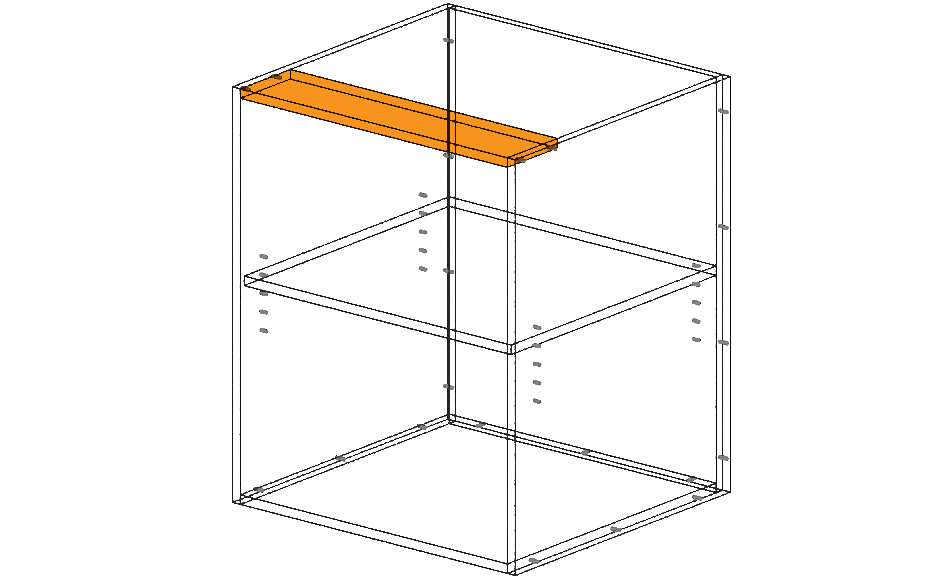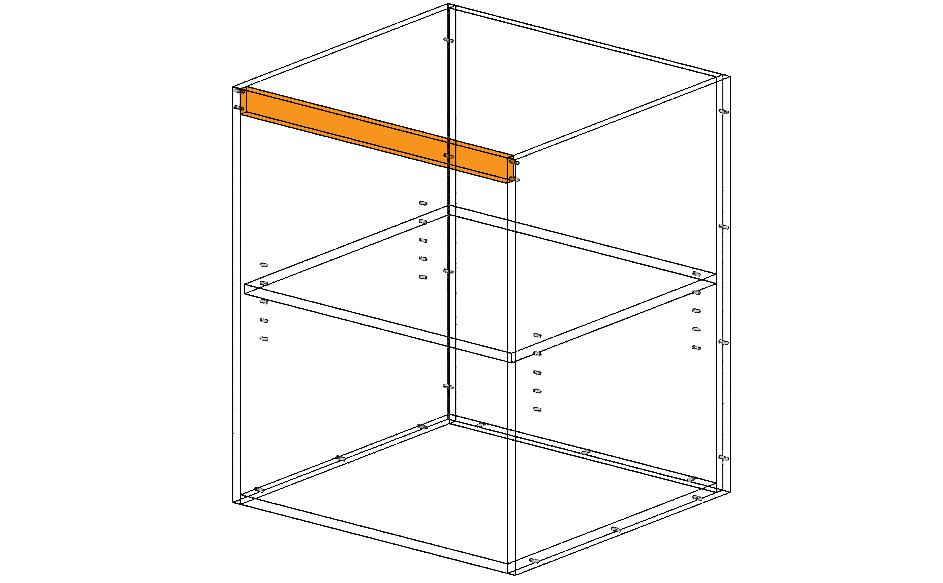
When customising a cabinet, goCabinets offers the convenience of letting you choose the type of "cabinet top" you need. We've included a straightforward description below if you're not entirely familiar with the terminology.
Solid Top
A “Solid Top” means that the entire top surface, from one edge to the other, is constructed using a single piece of board. The solid top is generally made from the same material you have selected for the rest of the carcase.
A solid top is commonly used for a standalone cabinet.
What is a rail?
A "rail" is a flat component that forms part of the framework of a cabinet. In the absence of a solid top, a rail is important for adding strength, stability, and structure to a cabinet.
Using rails is beneficial because they require less material and result in a lighter cabinet than a solid top. A rail is commonly used when a separate, shared top is being used across multiple cabinets.
eg. The cabinets that make up a kitchen island may use rails and support a shared benchtop.
Rail on Flat
When a rail is placed "on flat," it means that it is installed horizontally, with its wider face or flat surface facing upward and parallel to the ground.

Rail on Edge
When a rail is placed "on edge," it means that it is installed in a vertical position, with its narrower edge facing upward.

Which type of rail should I use?
The method chosen is typically based on individual preference as well as functional requirements.
Generally, "Rail on Flat" is the most commonly used method and maintains a consistent, uninterrupted appearance across the top of the cabinet. Unlike "Rail on Edge", which is more clearly visible upon opening a cabinet.
"Rail on edge" is most notably used for units when a sink or another feature will be occupying space at the top of the cabinet. This would prevent a rail from being able to lie flat.







